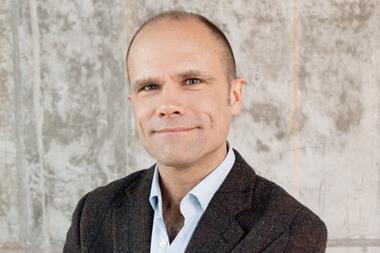Syringes in soft drinks, insecticide in painkillers, plasters in baby food, these are a few of the extortionist's favourite things. Extortionists know nothing captures the public's imagination quite like product tampering, with its threat of danger and death to the man on the street. The media is similarly excited and horrified, with the opportunity for shock-horror headlines.
Product tampering cases such as the Tylenol murders have even made it onto the Urban Legends website. After taking Tylenol painkillers, seven people died from cyanide poisoning between 29 September and 1 October 1982. Although the case was never solved, legal experts believe that it was a genuine case of product contamination, not an attempt to cover up the murder of one person by the killing of six others. Other well-known mass contaminations, such as the Pepsi product tampering scandal of 1993, involved one apparently genuine case setting off a flurry of copycat actions.
There is no doubt that contaminations, both real and copycat, cost companies heavily. The Pepsi fiasco bled the company of US$25m (£17.86m) in lost sales and marketing repair costs and another US$10m (£7.14m) in coupons for free drinks to lure its buyers back. And in a world where, increasingly, a brand can be a company's greatest asset, a contamination scare can be financially fatal. As Zurich's corporate services practice's risk engineering manager Dudley Brown says: "You can do everything to mitigate the loss, but people still won't buy the product."
But is malicious product contamination really a big risk for companies? The experts do not believe it is. Ian Harrison of Lloyd's syndicate Beazley Furlong is one of the leading product recall underwriters in the UK market. He states that malicious tampering, either by extortionists in a bid for money, campaigners in a bid for publicity, or obsessive individuals with an irrational grudge, is extremely rare. Instead, products are usually contaminated by disgruntled employees or by accident at the manufacturing stage.
Houlder Insurance Services' Mike Kane and David Page of Alexander Forbes are probably the UK's most experienced product recall brokers. Kane agrees that malicious tampering is unlikely. "Contamination cases tend to be accidental," he comments. "I cannot think of one claim where we've had malicious tampering." Page says that it is parts manufacturers, rather than consumer goods producers, who are the most prolific buyers of product recall insurance, particularly those who supply parts to large manufacturers with strong brand names. The Bridgestone tyre debacle is one good example of why this is the case.
There are several reasons why incidents of malicious tampering, both during manufacturing and once on the shelves, have become less frequent. Harrison says improved quality control processes usually stop any products contaminated by employees from leaving the factory. Another reason is that products have become more difficult to contaminate. "More products are tamper-proof, hot sealed, clip-capped. The precautions were introduced for health reasons as well as to stop tampering."
There is also less chance of publicity. David Little is an ex-police officer, whose firm Sheldon Little advises companies on crisis management. He says the media are now better informed about copycat crimes and usually co-operate with police requests for contamination stories to be kept out of the press. "I've been involved in about 25 or 30 contamination cases, but only two have got into the media and only one of those was very high profile," Little comments. "The big case was a recall costing £32m. All the companies survived. The UK media take a much better approach to it now."
However, prevention is still preferable to cure in the product recall game. Harrison points out that a recall is not easy work. "It's more difficult than people think; it's not like putting your supply chain into reverse," he says. "If you tell Tesco to pull your stuff off the shelves, they won't be familiar with that." It is far better to ensure a recall is not needed, through effective risk management.
Little is called in by a number of insurers, including Beazley Furlong, to provide crisis management training that companies can employ in the event of a tampering scare. "What we try to do is encourage them, through training, to understand the principle of managing a crisis so they appreciate the primary concerns and can adapt," Little says. "If it's not managed properly right at the outset, it can all go wrong so we like to get them to set up a good procedure." He says such consultancy work is becoming more popular with insurers and the companies who approach him directly. "We're doing more and more preventative work now, which is good because they're prepared for a crisis and also, if there is a problem, we're familiar with each other."
Bringing in the experts is a wise move, Brown agrees, particularly in extortion cases. He says they are able to decide whether the threat is "to damage the business as opposed to someone who does not mind if they damage people as well. Professionals have the ability to judge the character and nature of the perpetrator to know whether this is a nuisance or actually a significant scenario in which you should pay attention because the guy knows what he's doing."
When contamination occurs, Little says the company's first objective is to minimise the chance of the public being injured. "The next general area is the question of whether a recall is needed. The company must be confident of its recall procedures."
Another vital step is to ensure the company acquires a public relations expert experienced in brand damage limitation. "There are a lot of people who are good news people but very few that are experienced in saving a bad situation," Little warns.
The next move is to ascertain the exact nature of the contamination, if it is not immediately obvious. Reading Scientific are recognised experts in this area. "They're capable of detecting poisons and drugs where a lot of labs are still at the 'taste and smell' stage," Little says. "Knowing where the contamination comes from helps us decide what kind of mitigation advice we give."
If you fear that the worst could happen, despite all the preventative efforts, there is cover available. Beazley Furlong's product, Total Recall, is one of the leading policies in the market. It covers 'short shelf life' products. Other insurers include AIG and QBE, which has a malicious and accidental contamination policy for the food and drink industries. Alexander Forbes offers a scheme for brokers with cover provided by The Underwriter, Trenwick International, Marketform and Catlin Syndicate but using its own policy wording. Houlder also offers a scheme, underwritten by RJ Wallace and QBE, with its own wording. These cover the food and drink industries, but are aimed more at manufacturers.
Are companies convinced of the need for cover? Page and Kane both have significant chunks of the available product recall business, but they have been in the market a long time and have built their books up gradually. "We get roughly twenty new enquiries a week from companies of all shapes and sizes, but there are not huge numbers of buyers for this type of product," Page says. "It's relatively expensive compared to normal product liability, because recalls are generally more expensive claims." He points out that contamination and recall cover has been around for about 20 years, but interest has only started increasing recently.
Kane agrees that interest is growing, particularly as big stores now often demand their suppliers have cover, but it has become more difficult for brokers to place the business. "The food and drink market is contracting; at least two underwriters have withdrawn in the past year due to poor results," he says. "The existing underwriters are upping rates. Selling it is difficult because it's comparatively expensive."
In light of the regular news stories of recalls due to faulty parts, small manufacturers of non-consumables may be wise to reconsider their position, particularly as Kane thinks this is a tip of the contamination iceberg. "You've only got to see the newspapers to know how many recalls there are and I'm sure that's not the whole story," he said. But, if the experts are correct, the food and drink people don't seem to have much to fear from the extortion bogeyman, no matter how delicious an image it might be for the headline writers.
--
Christine Seib is a StrategicRISK reporter
AIRMIC comment
AIRMIC retail special interest group chairman Paul Howard comments: "Product extortion, malicious tampering and product recall are important considerations for retailers because of their potential effect on the key issues of brand and reputation.
"In respect of product extortion, a high percentage of incidents are crude hoaxes, but there seems to be a decrease in activity by pressure groups, aware of the poor publicity potentially generated for their own cause. This leaves individuals or small ad hoc groups acting in concert, which is often more difficult to detect. This has led to some retailers making greater use of psychological profiling.
"Malicious tampering has been lessened by the greater use of pre-packaged goods and anti tamper seals, along with concentration of CCTV cameras in 'vulnerable' areas.
"Product recall has been greatly improved by batch numbers and codes. These are an integral part of integrated computerised supply chain solutions, which enable the critical paths through system to be determined. In addition, a growing awareness of the power of the various media has led to more successful handling of situations if such an incident should occur. Unfortunately, there are still too many recalls which are unsuccessful, which ought to provide vital lessons to all retailers.
"These two areas also greatly benefit from a partnership approach with one's suppliers or outsourced service providers.
"In all cases, benefit can be gained from specific scenarios being worked into business continuity and incident management exercises."



















